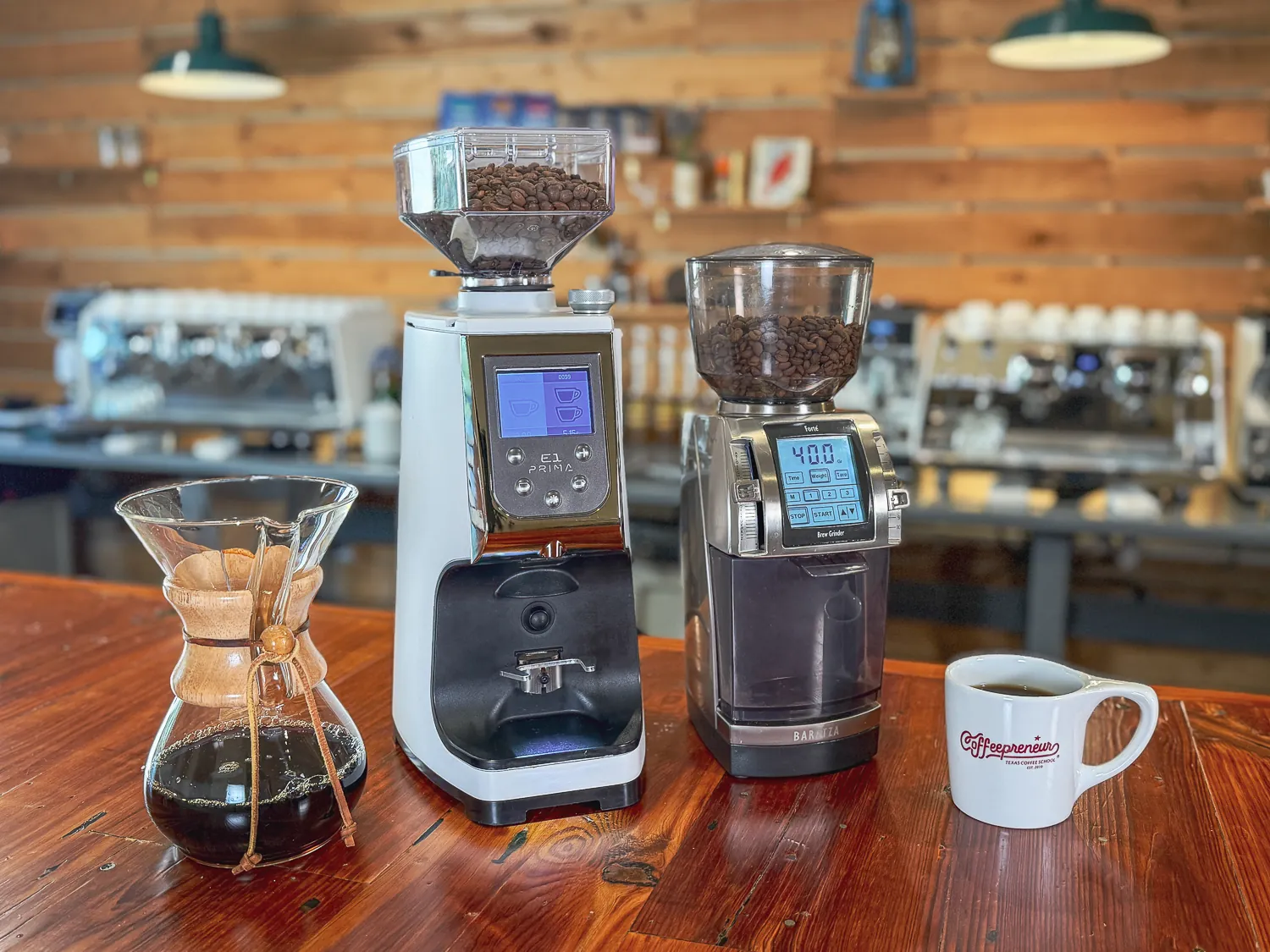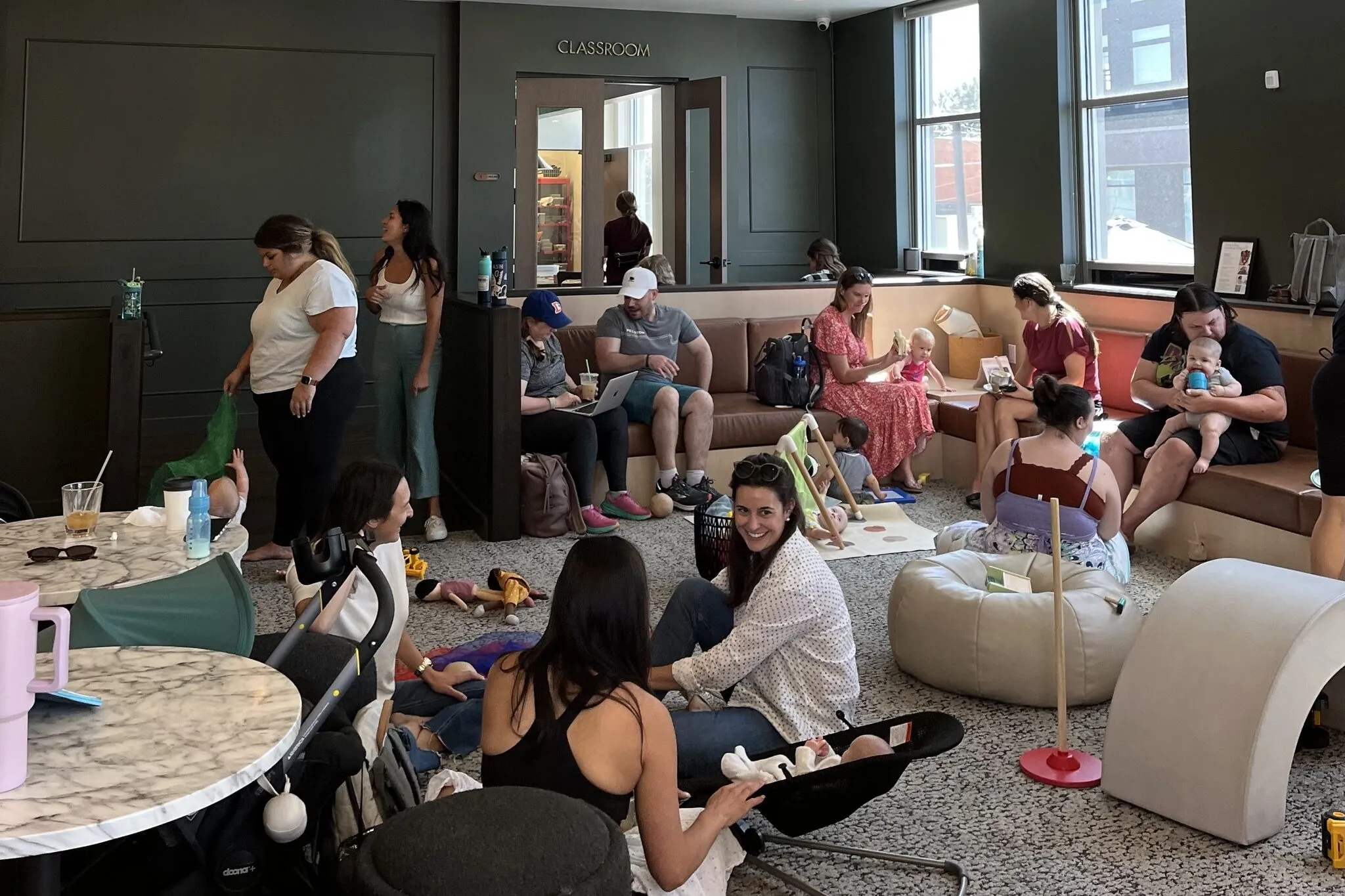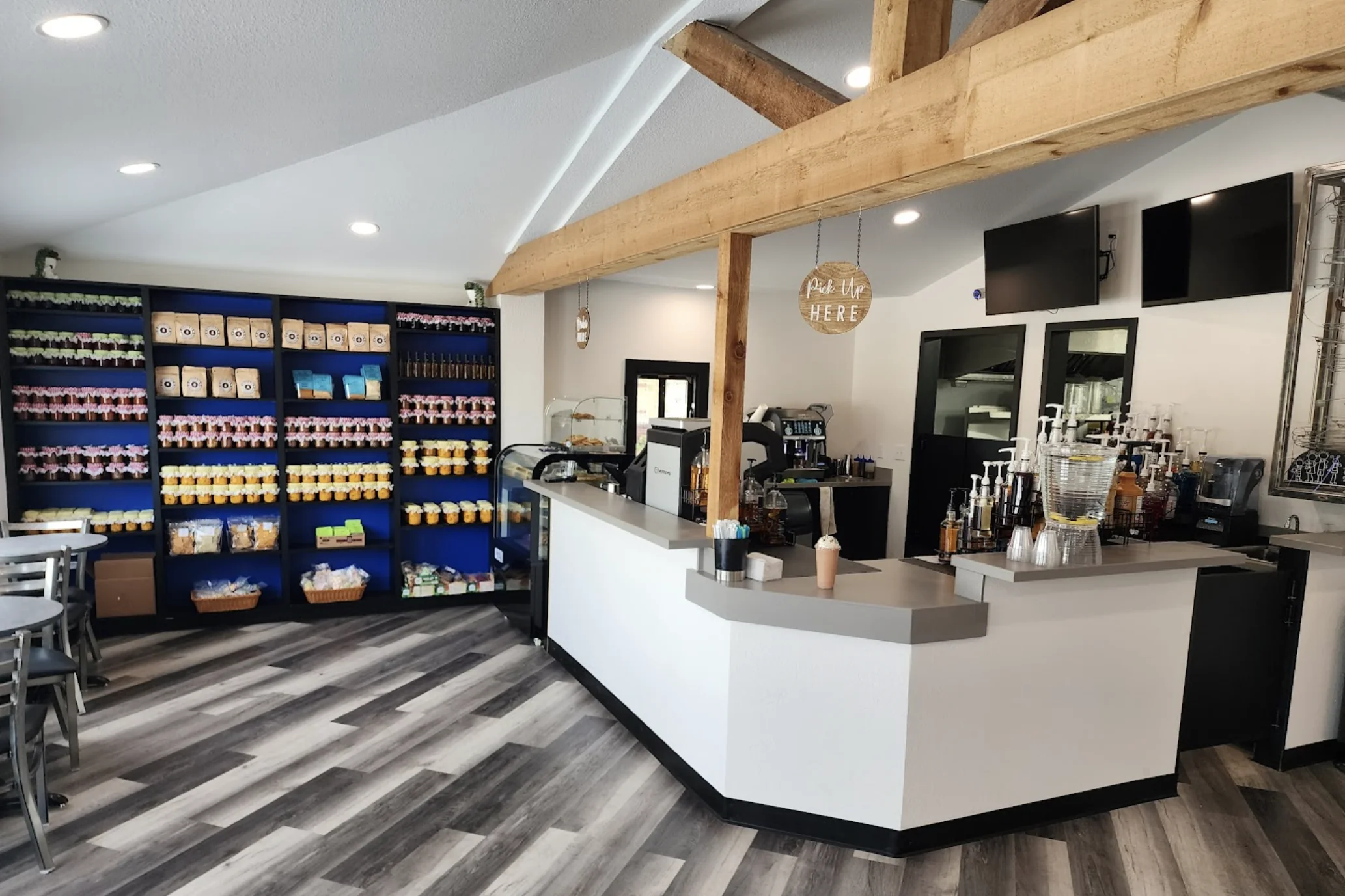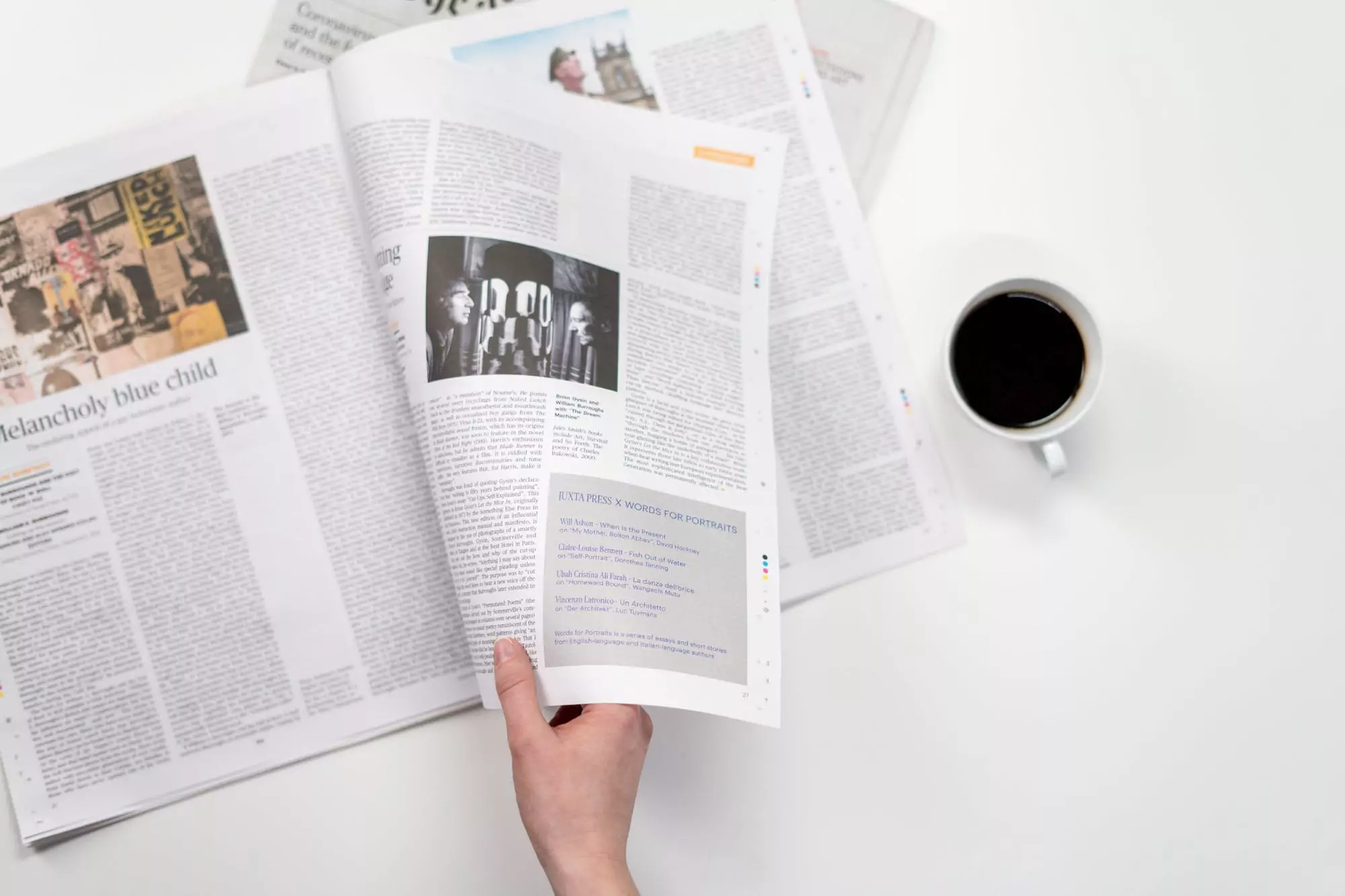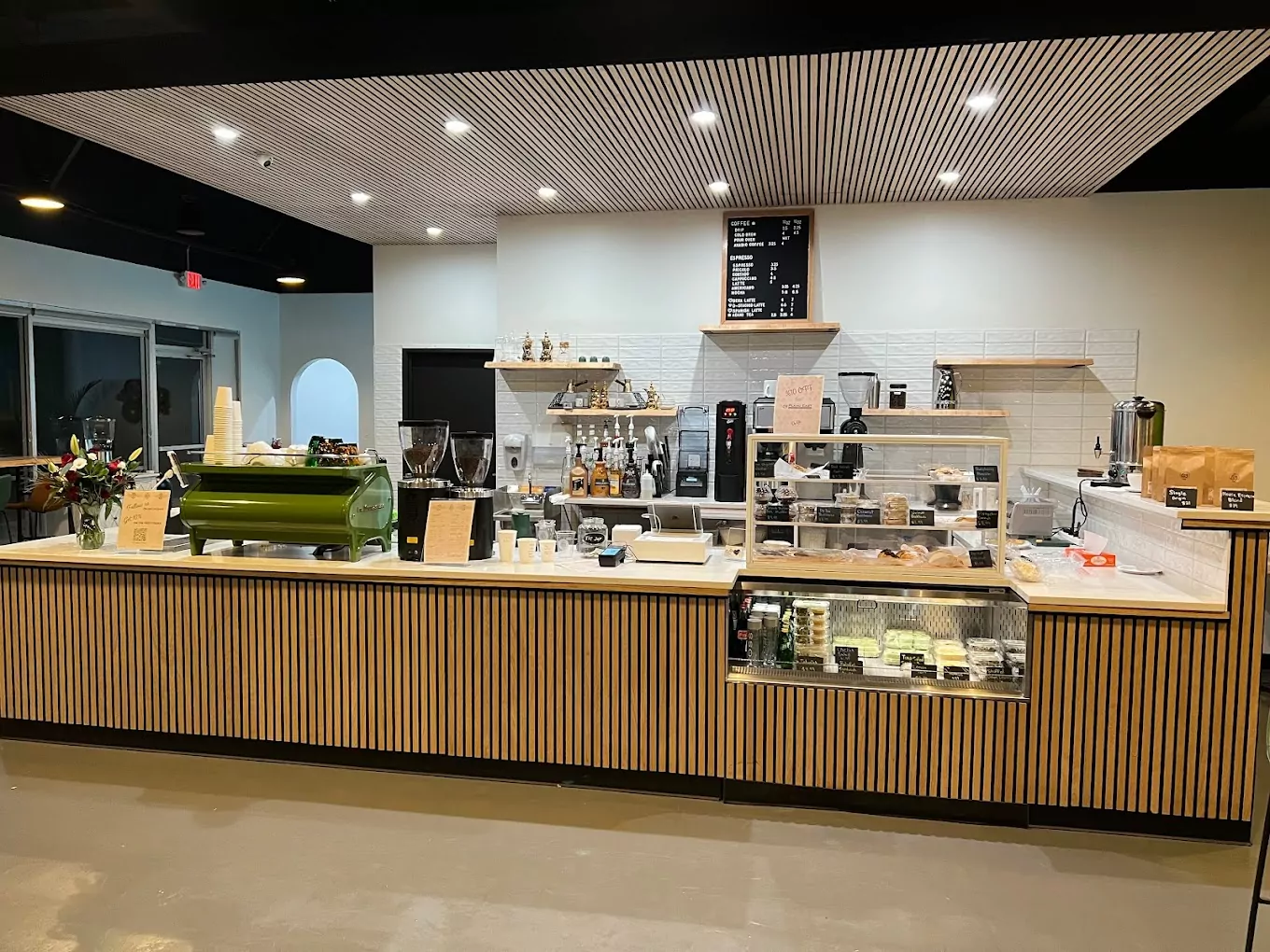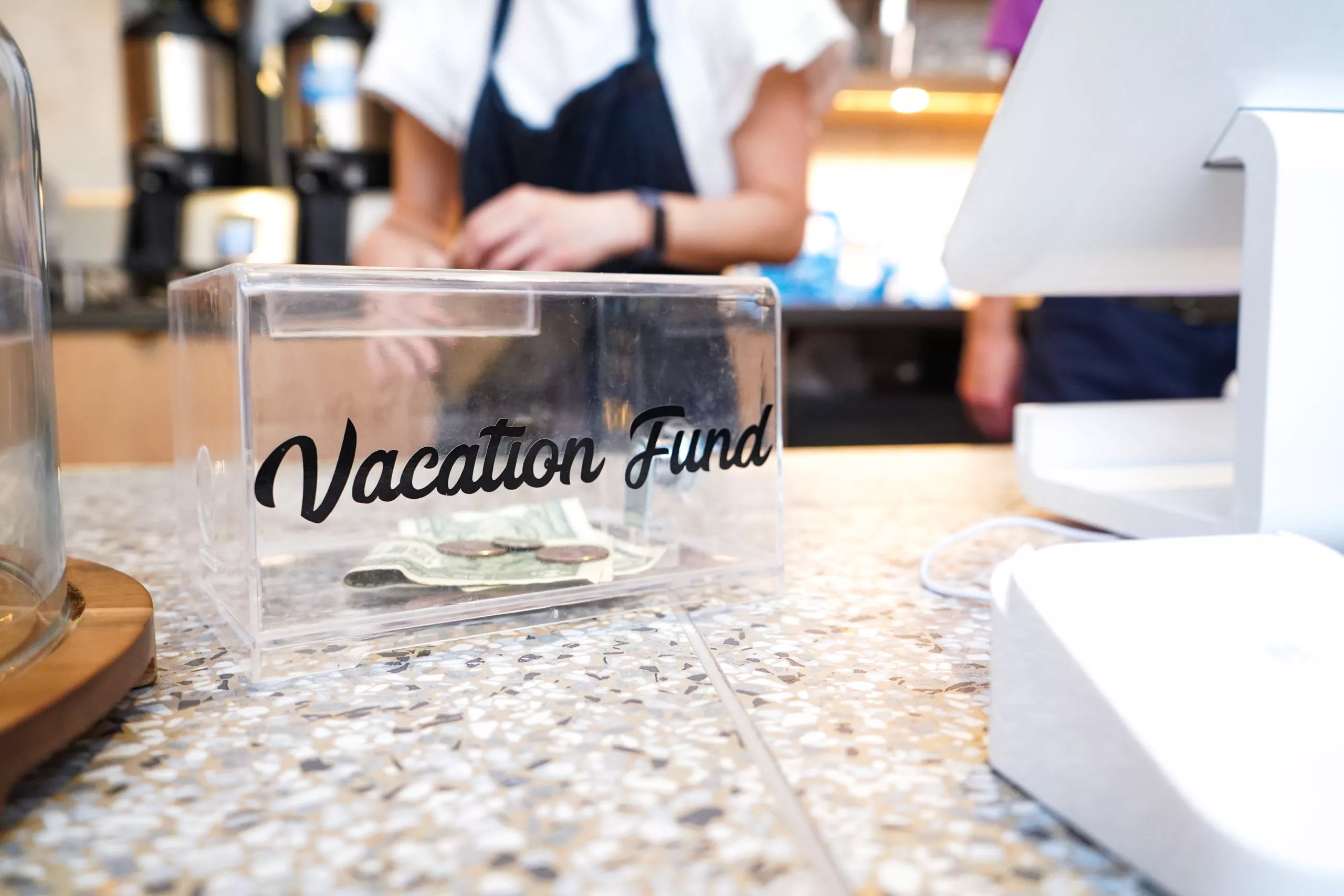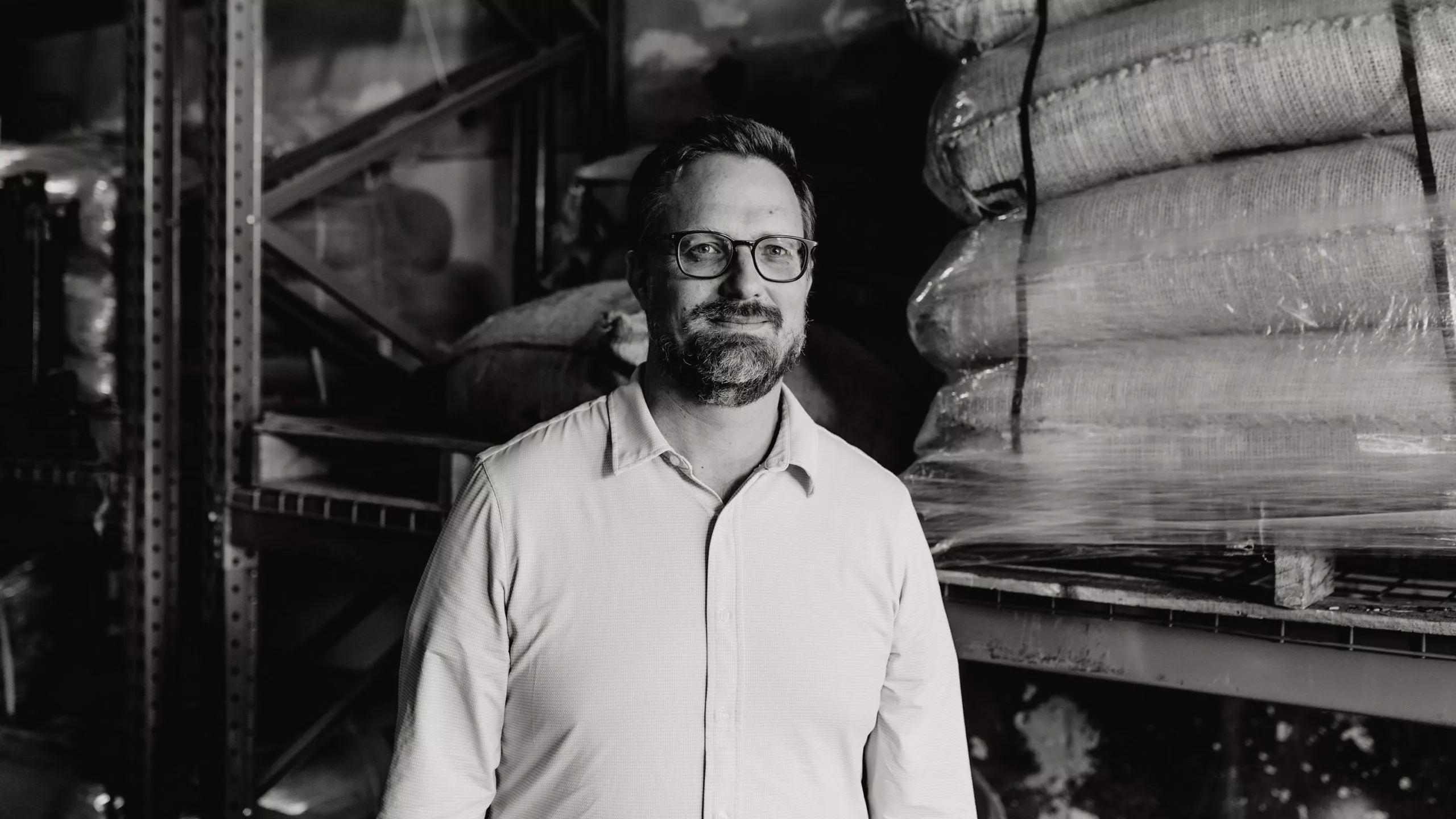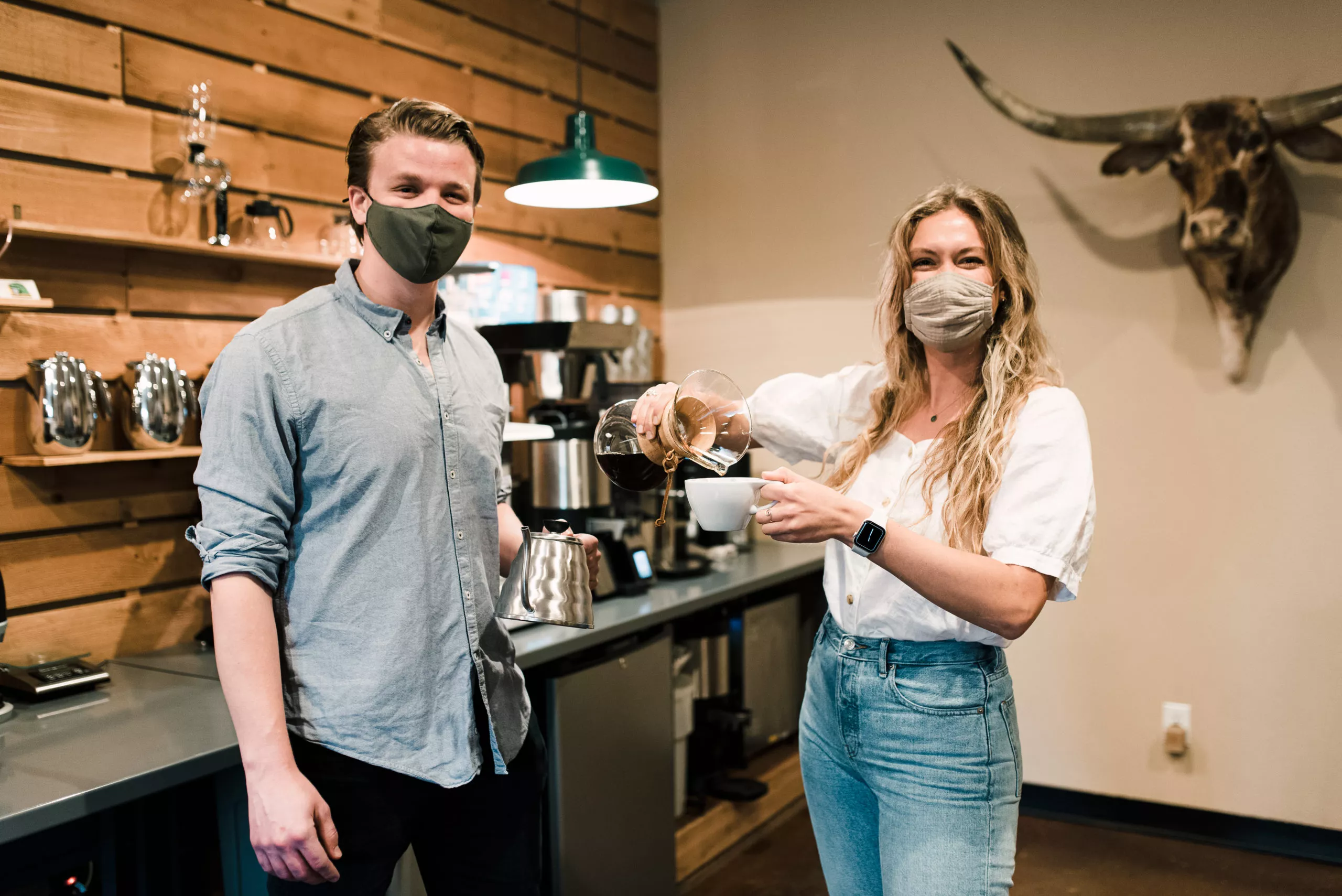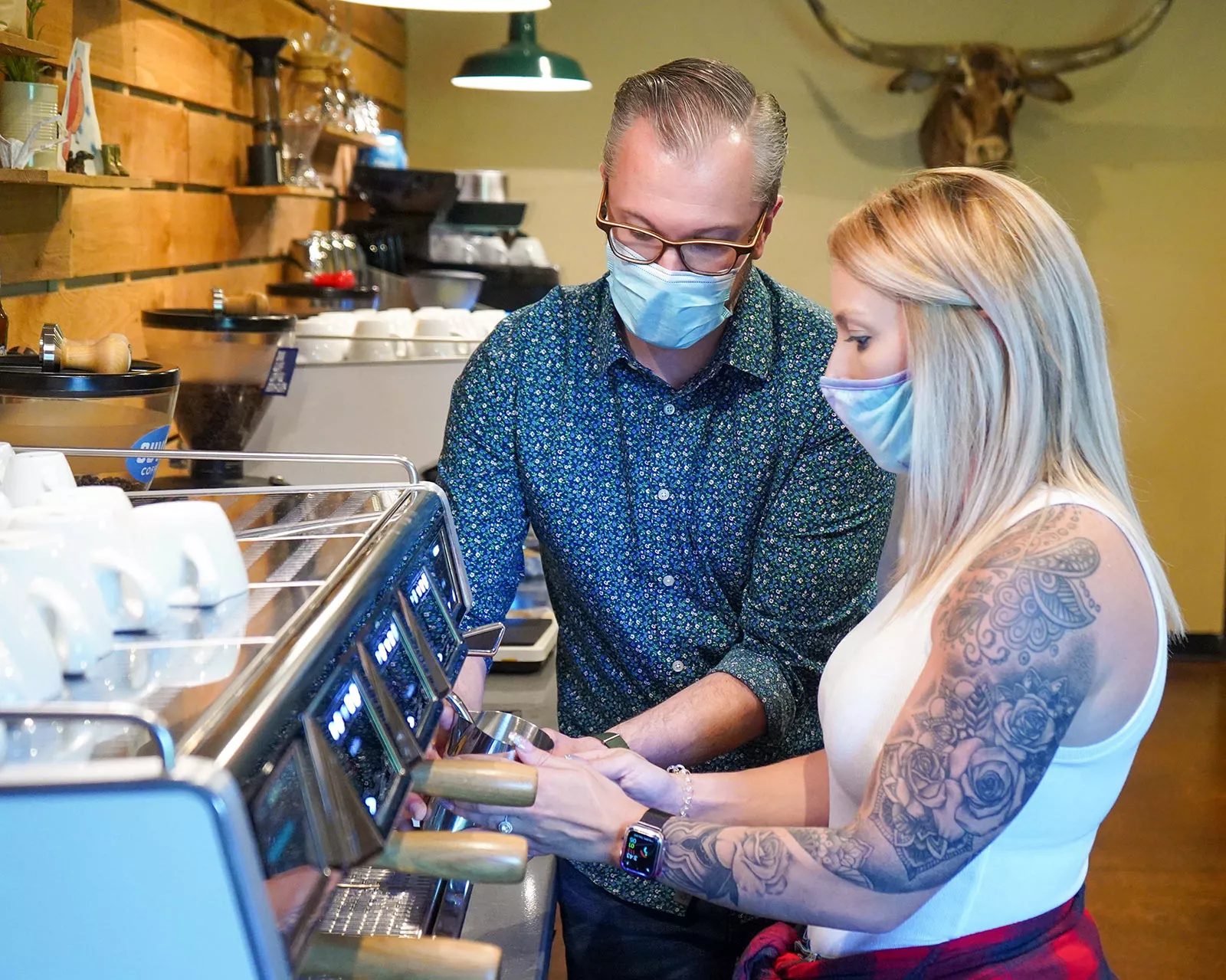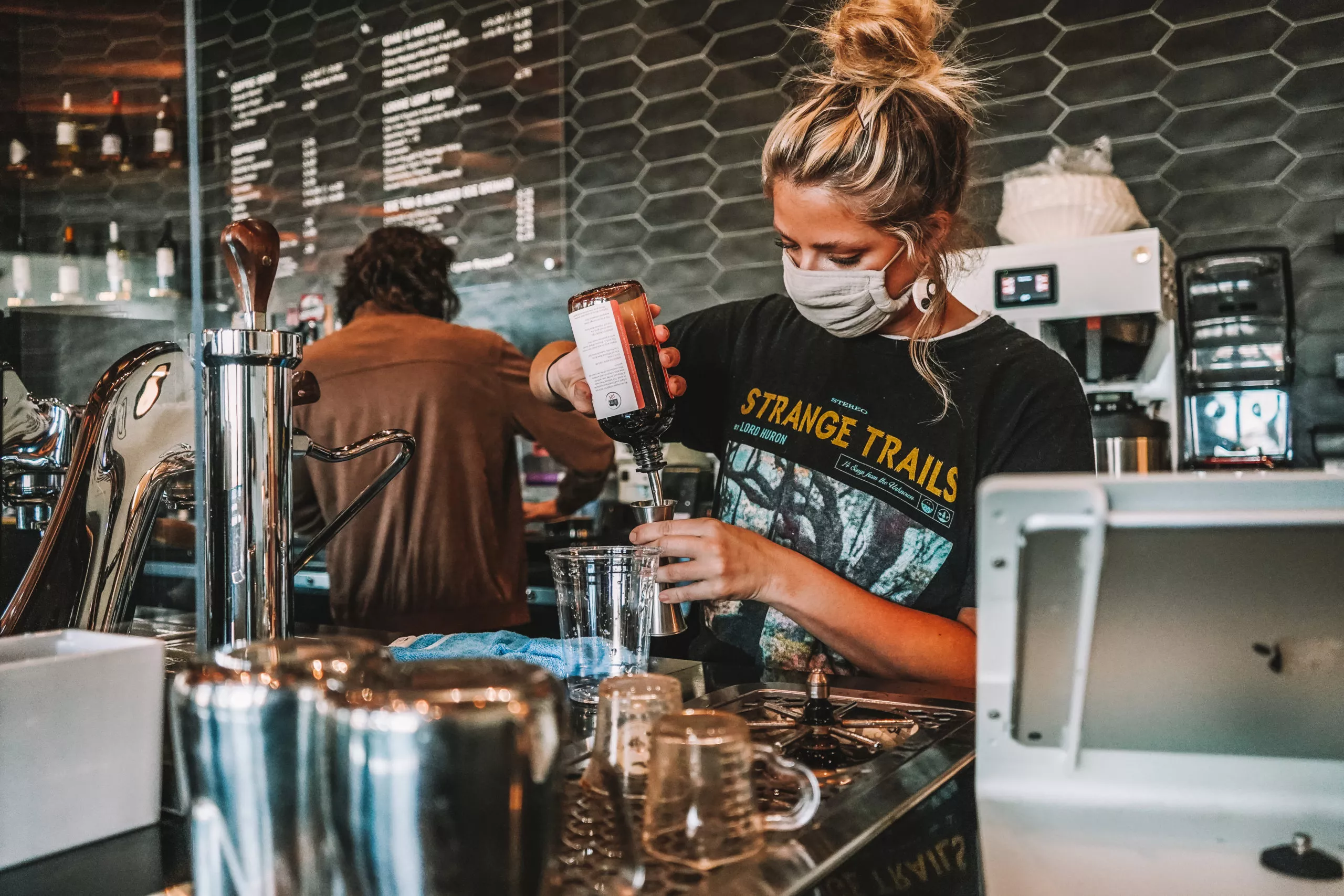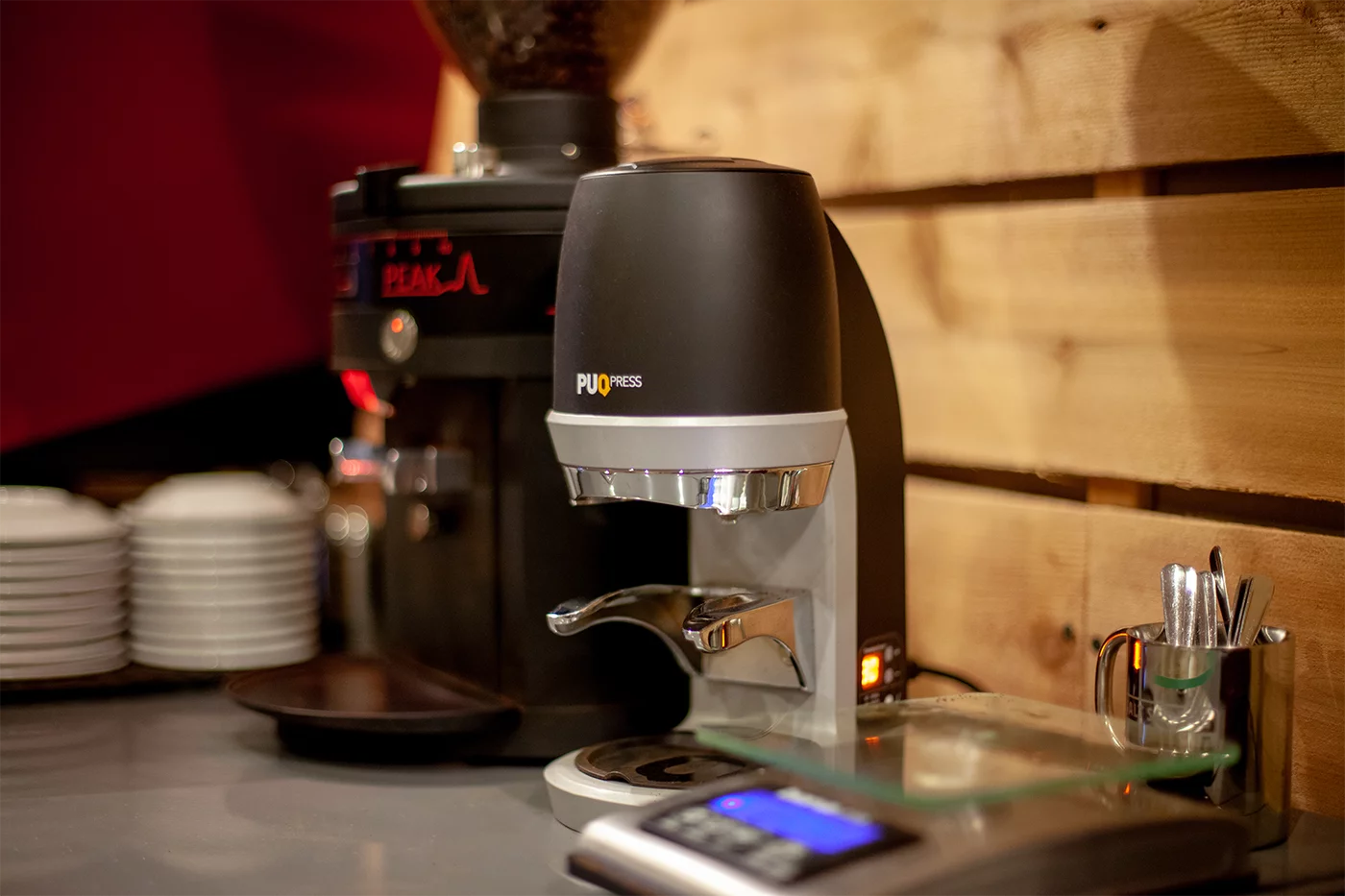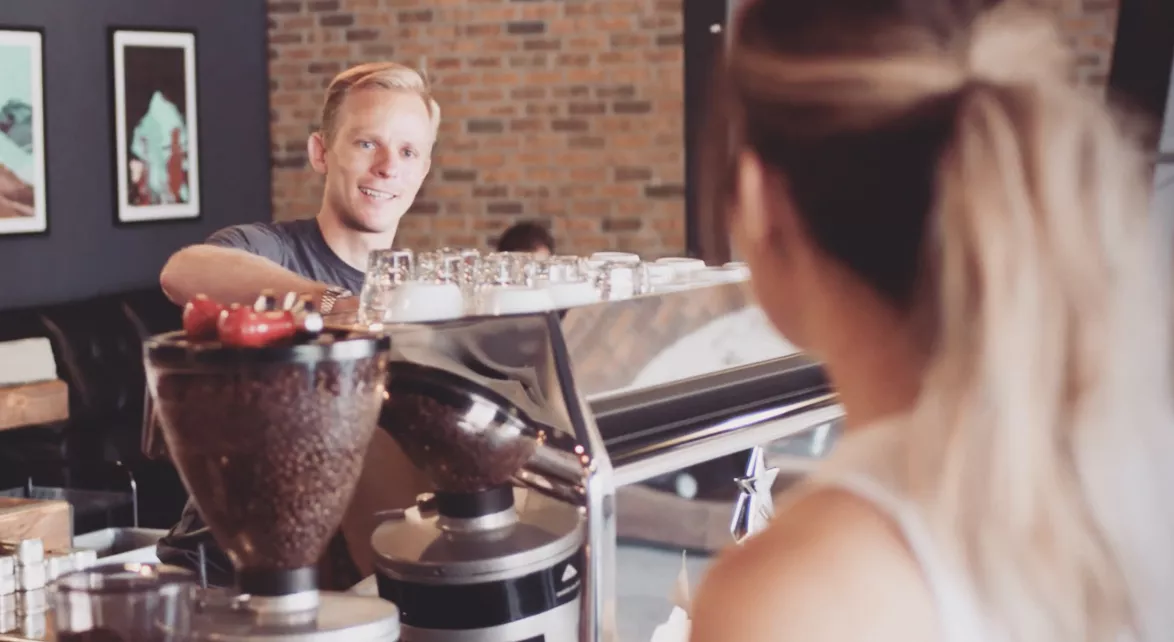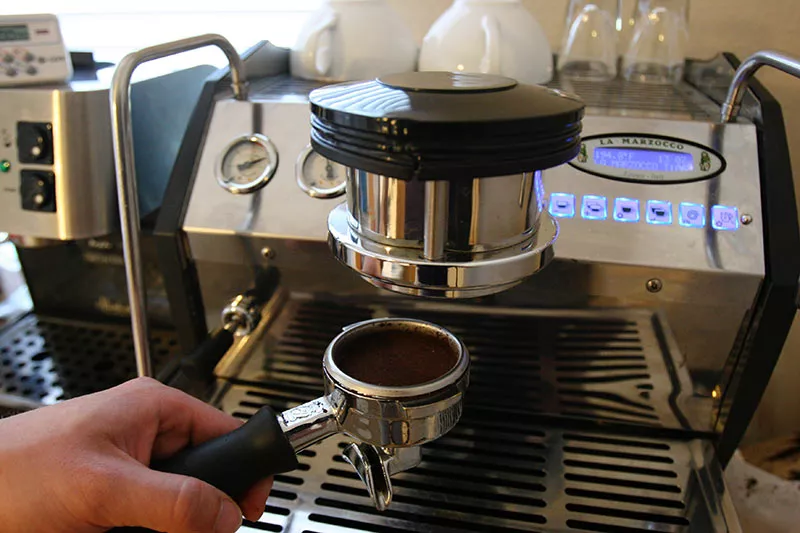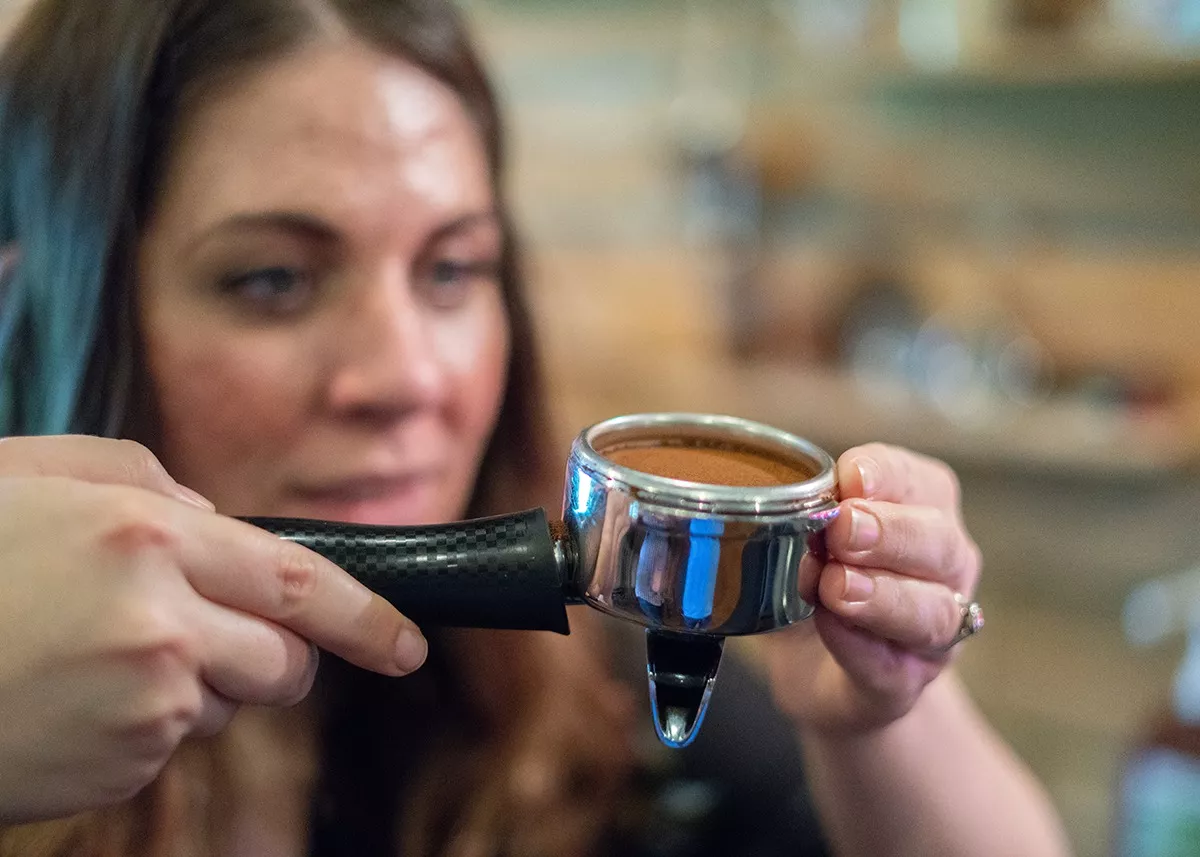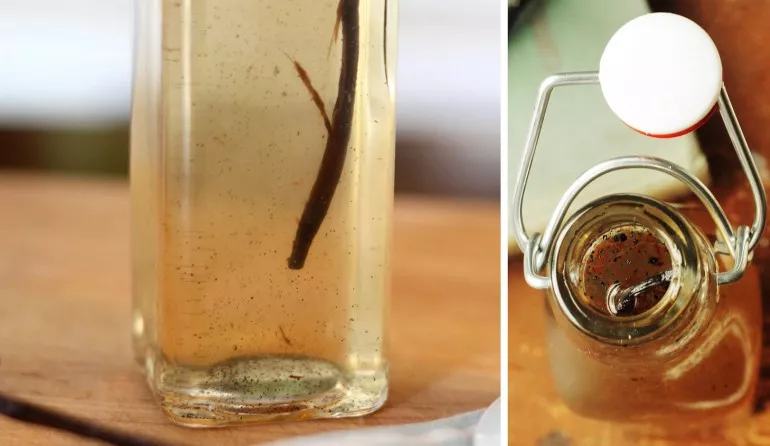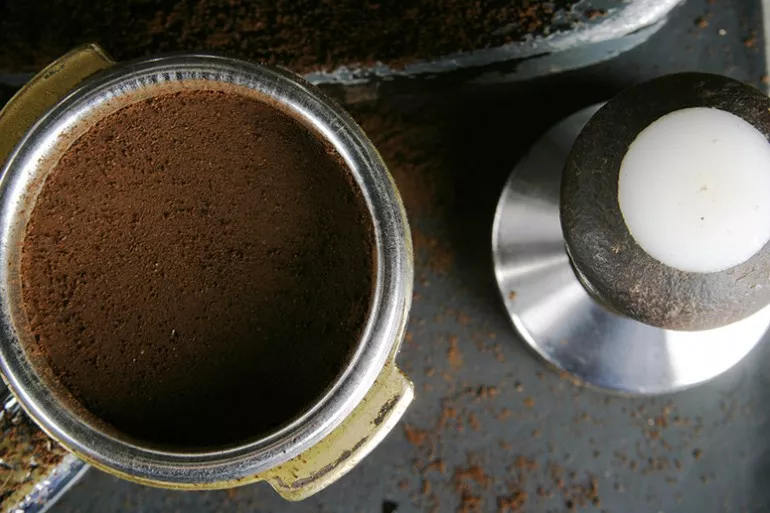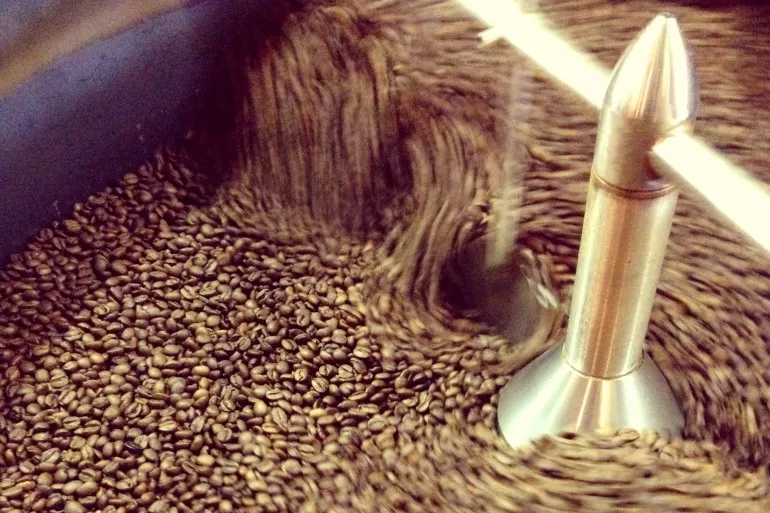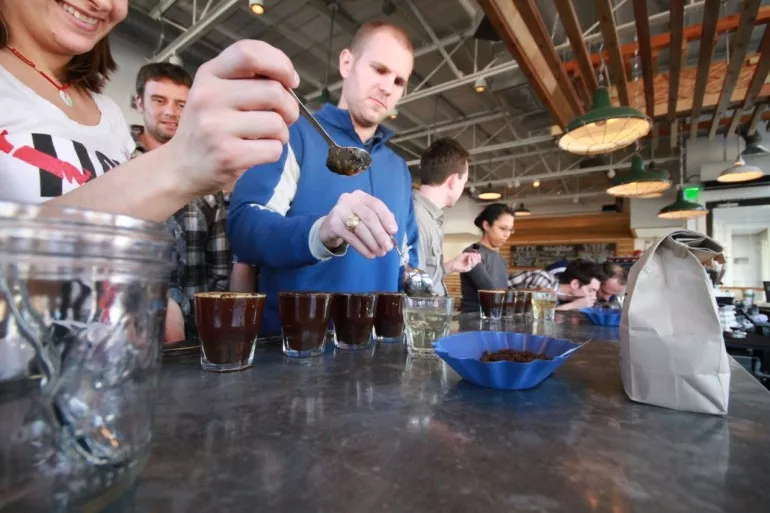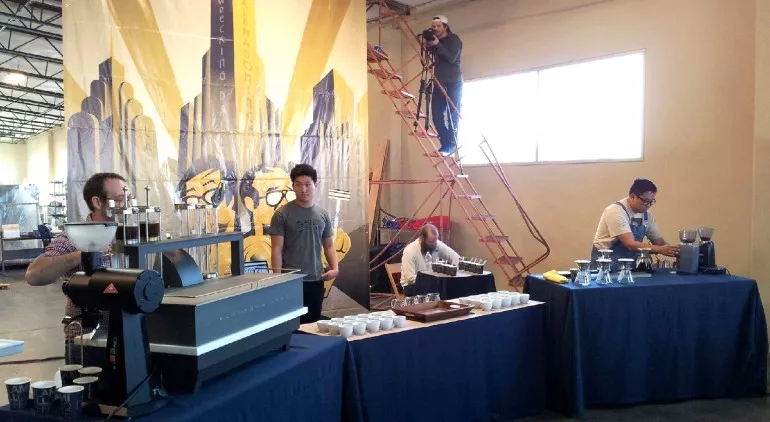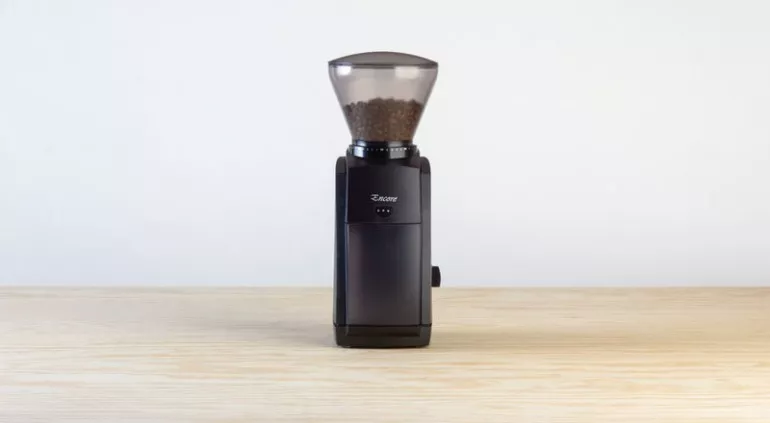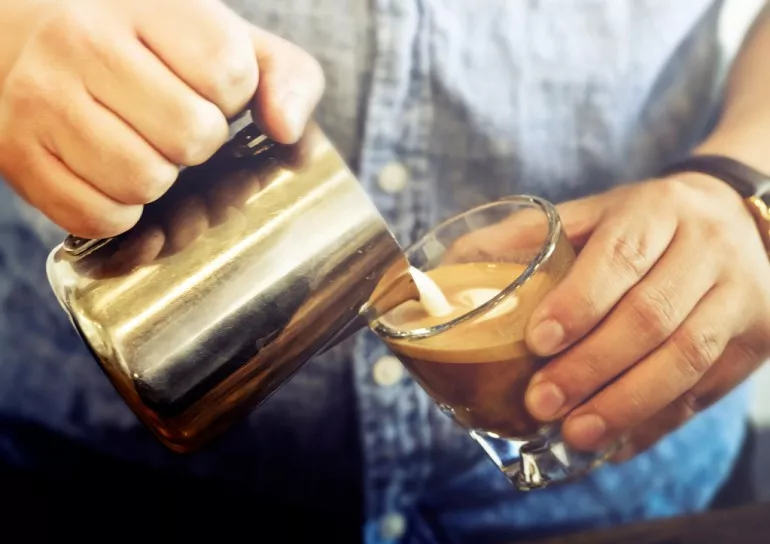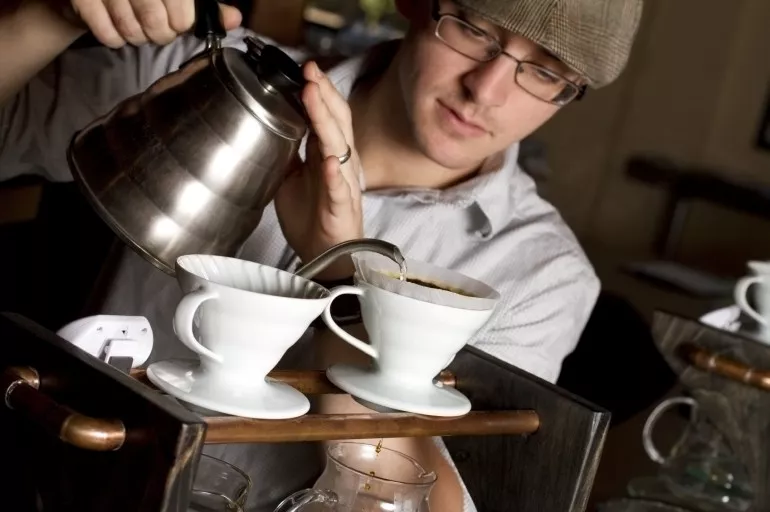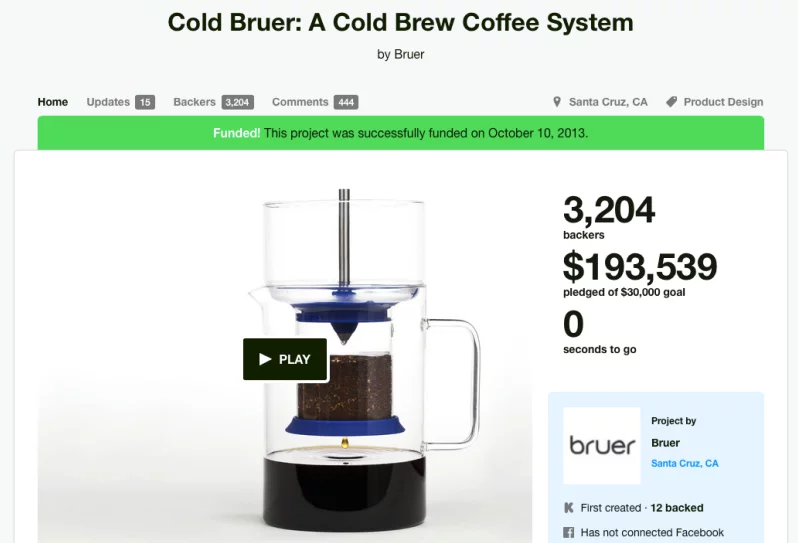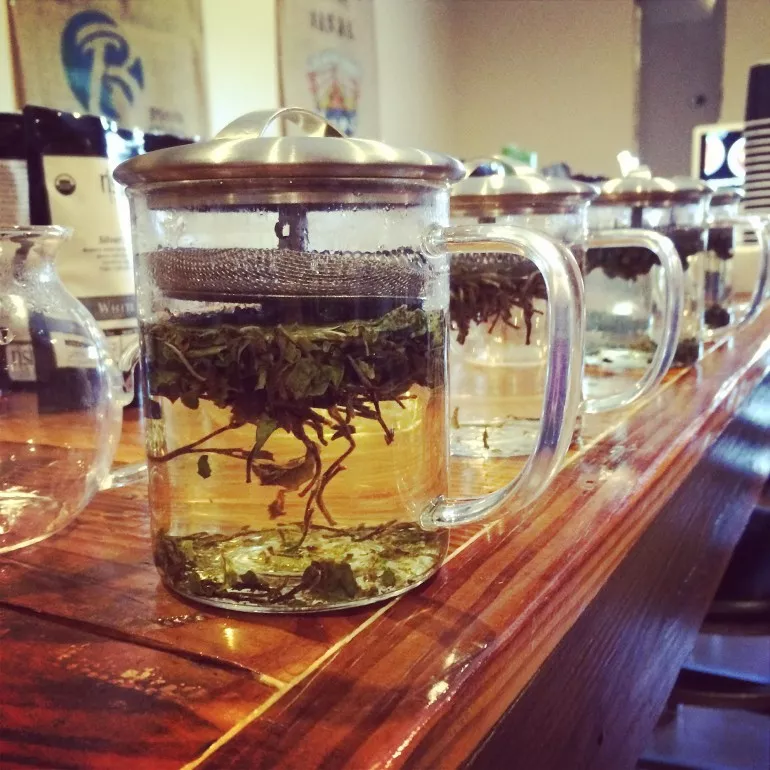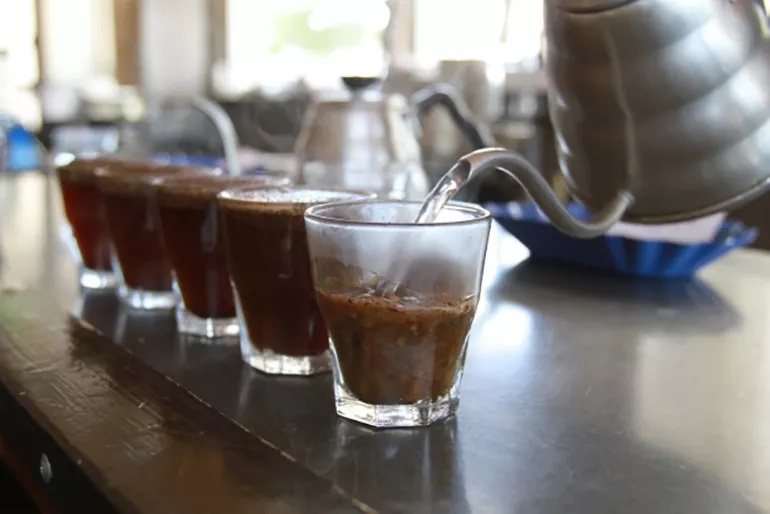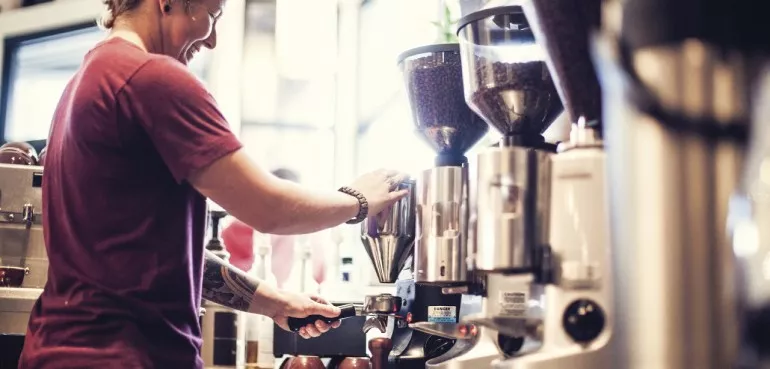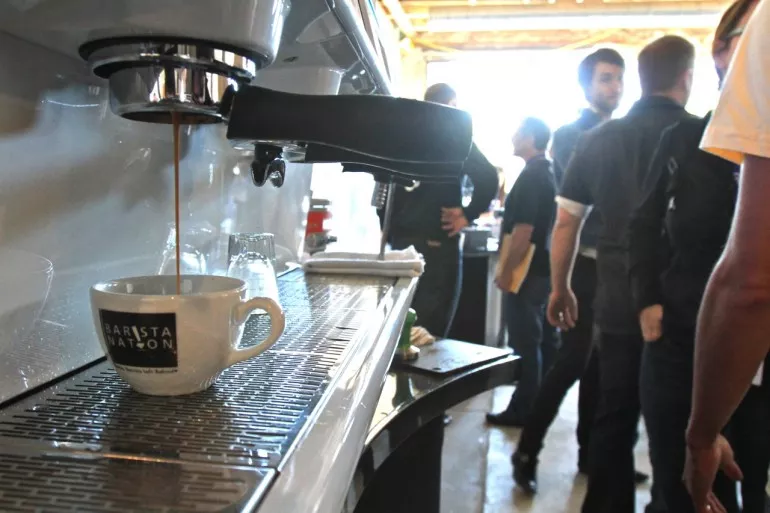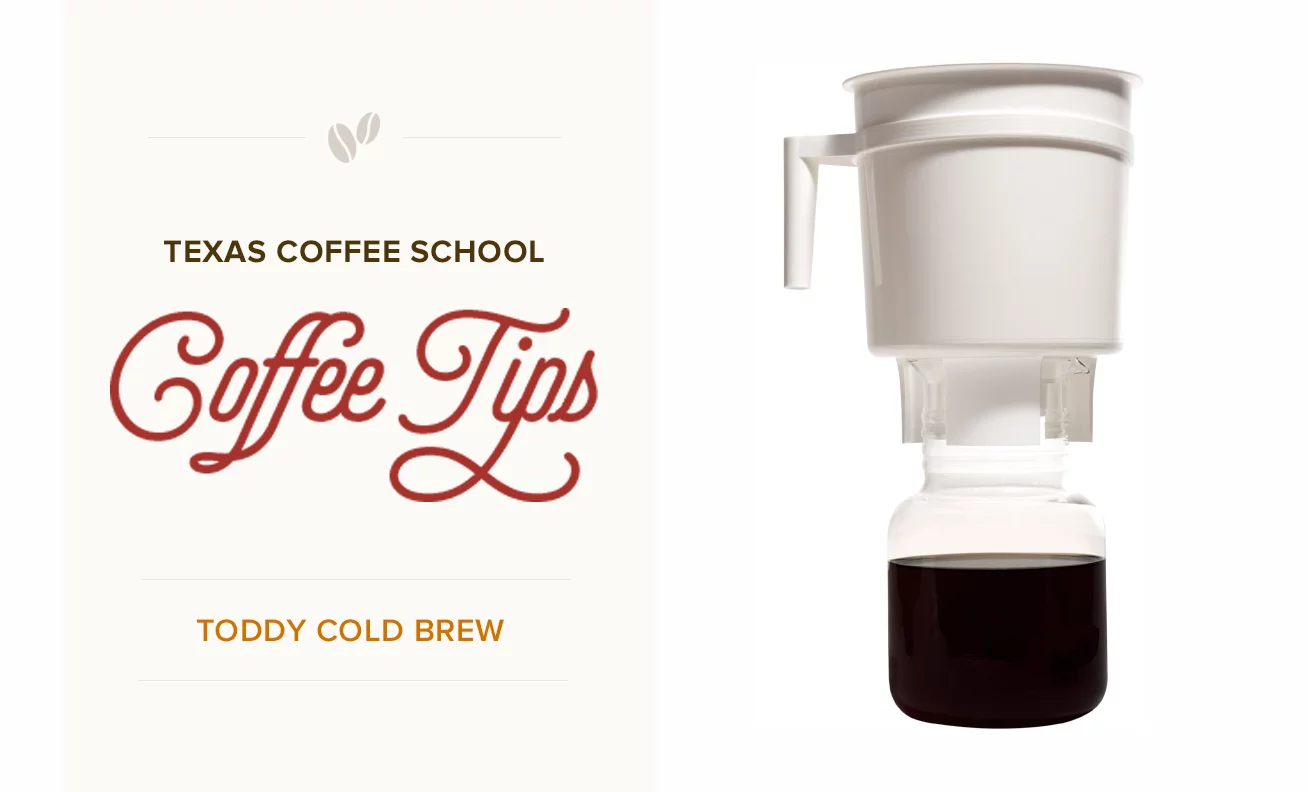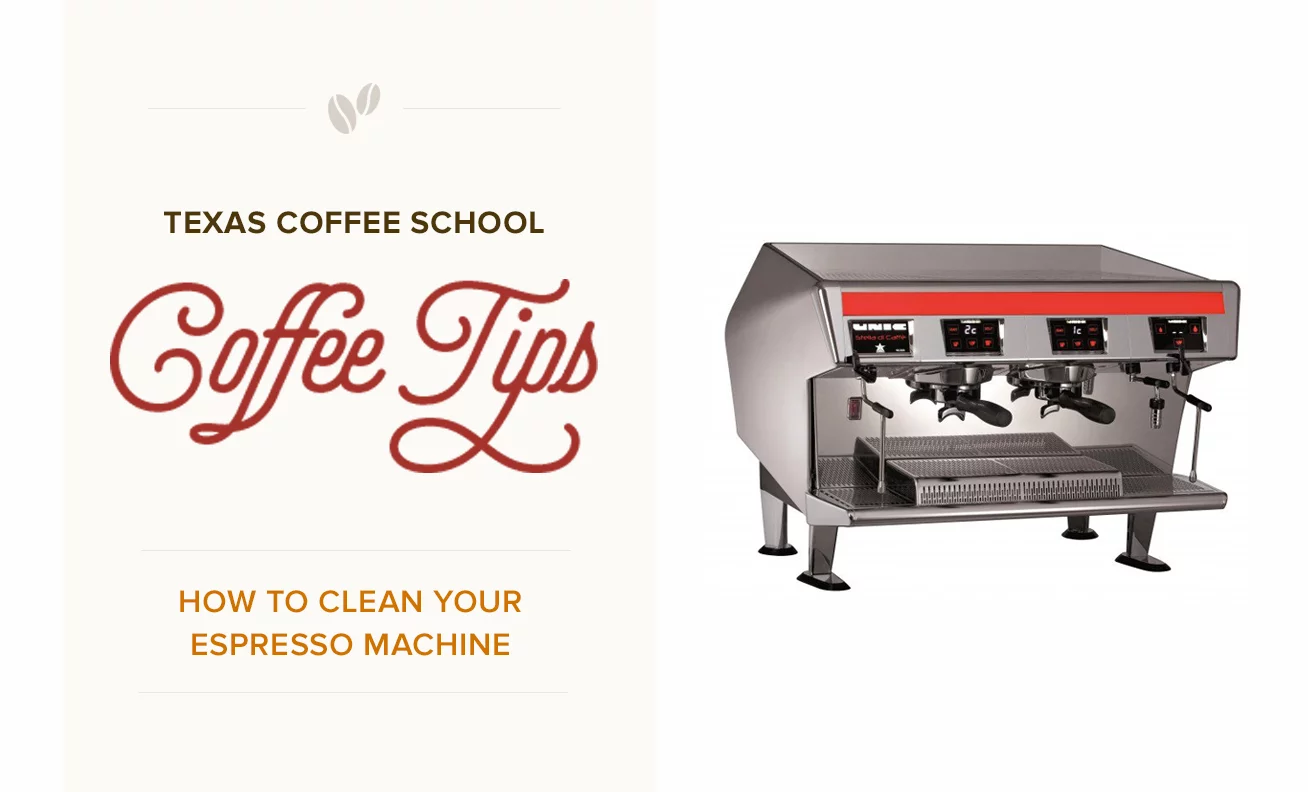
How To Clean Your Espresso Machine – Best Practices
How to Clean Your Espresso Machine
Below you will learn best practices essential to cleaning a commercial espresso machine and home espresso machine alike.
Check out our Coffee Education Classes. Become a Coffeepreneur® in our Texas Coffee School 3-Day Coffee Business Master Class.
Or, join us for barista training or coffee shop operations courses.
Cleaning Espresso Machines:
Cleaning and equipment maintenance is a critical part of the espresso-making process, for both the taste of the coffee and the longevity of your equipment. Coffee is a messy business; grounds and rancid oils will build up quickly, clogging equipment and negatively affecting drink flavor. Milk can quickly buildup on steam wands, creating clogs and possibly contaminating drinks.

Supplies for Cleaning an Espresso Machine:
- Urnex Cafiza Espresso Machine Cleaning Powder
- Full Circle Milk Cleaning Liquid steam wand cleaner
- A group head cleaning brush
- 2 towels
- A backflushing disc that fits in your portafilter
- A flat head screwdriver (you may need a ratchet/socket, depending on the make of your espresso machine)
Steps for Cleaning and Maintaining an Espresso Machine:
Throughout the Day:
- Clean/wipe steam wand with a “steam wand only” designated damp rag after every drink throughout the day. Keep this damp rag in small pan to the side of the espresso machine. It is critical that you never use this rag for wiping counters or anything other than the steam wand to prevent contamination. Change this rag throughout the day and sanitize the pan with each change.
- Backflush groups with water only (no chemicals) at least once per shift. To do this you must first leverage your flat head screwdriver against the “ear” of the portafilter to pop the basket out of the portafilter. Replace basket with your backflush disc. To backflush you place the portafilter into the group head and allow water to run for 8 to 10 seconds. You will notice no water is escaping the portafilter because the backflushing disc is forcing the water to circulate back up through the group head. Repeat this process several times to help loosen any old coffee grounds and oils. When finished, remove the portafilter and observe all the coffee grounds you just cleaned from the group. Now remove the backflush disc.
- Rinse and wipe clean portafilters and baskets at least once per shift to remove old oils and buildup. Replace baskets.
- After clear water backflushing and cleaning portafilters, clean/brush group heads and around the gaskets with a group head brush or coffee tool to help remove any old coffee grounds and oils. Run water to rinse away any excess coffee grounds. When water runs clear replace freshly cleaned portafilter into the clean group head.
- Using a slightly damp towel, wipe down exterior of espresso machine at the end of every shift. You should be able to follow damp cloth with a dry cloth to polish the machine with ease.
- This process should be done in down time and should not take you more than 5 minutes to complete.
At the End of the Day:
- Soak portafilters and baskets (removed) in warm water and Cafiza espresso machine cleaner for around 10-15 minutes. When finished, rinse and wipe away any film left behind.
- Using a small amount of Cafiza espresso machine cleaner powder, backflush each group on the espresso machine several times to loosen old coffee grounds and remove rancid oils.
- After backflushing, clean/brush group heads and around the gaskets with a group head brush or coffee tool to help remove any old coffee grounds and oils.
- Carefully wipe group and dispersion screens with a dry towel to ensure no dripping hot water. Then, using a flat head screwdriver, carefully drop the dispersion screen from the group. The dispersion screen will be hot so carry it to the sink with a towel and run it under cool water and clean away any debris or oils left inside.
- Once screens are clean, using a towel, wipe the inside of the group and around the gasket to ensure you didn’t miss any oils or old coffee grounds. Once wiped down, carefully replace the dispersion screen (caution: the group head is hot).
- Remove and clean the espresso machine drip tray.
- Using a slightly damp towel, wipe down exterior of espresso machine. You should be able to follow damp cloth with a dry cloth to polish the machine with ease.
- Fill a 20oz frothing pitcher 1/2 way with hot water. Add around 1oz of Full Circle Milk Wash. Insert steam wand and froth as if frothing milk. Allow wand to soak in solution for 5 minutes. Empty steaming pitcher and repeat with water to rinse. You will notice that the Milk Wash not only cleans your steam wands, but it also removes any old milk buildup from your frothing pitcher!
- Right before serving your next shots of espresso pull and discard at least one double shot of espresso to “re-season” the grouphead and portafilter.
Espresso Machine Maintenance Best Practices:
In addition to these daily steps, there are other tasks that must be performed periodically to ensure equipment longevity: Your espresso grinders will need to have their blades changed periodically, depending on use – you can refer to the following schedule for guidance.
2-4 LBS OF COFFEE GROUND DAILY = replace burrs every 12 months
4-6 LBS OF COFFEE GROUND DAILY = replace burrs every 6 months
8-13 LBS OF COFFEE GROUND DAILY = replace burrs quarterly
Water treatment is also crucial for quality espresso and machine health, and filters will also need to be changed periodically; this topic and others involving routine maintenance are covered more thoroughly in the Quality Coffee Brewing Class, but you should also work with your espresso equipment vendor to ensure that these preventative maintenance tasks are being properly completed.
CONTINUE YOUR COFFEE EDUCATION
Texas Coffee School offers a variety of coffee and barista training classes that can enhance your coffee knowledge and brewing skills.

Register for a Coffee Class
The Best Coffee Training Available
We’ve helped hundreds of students successfully launch their own coffee shop businesses. Join us in our 5-Star Rated Coffee Classes, whether you’re an aspiring entrepreneur looking to open a coffee shop, a manager, a barista or home enthusiast looking to sharpen your skills.







